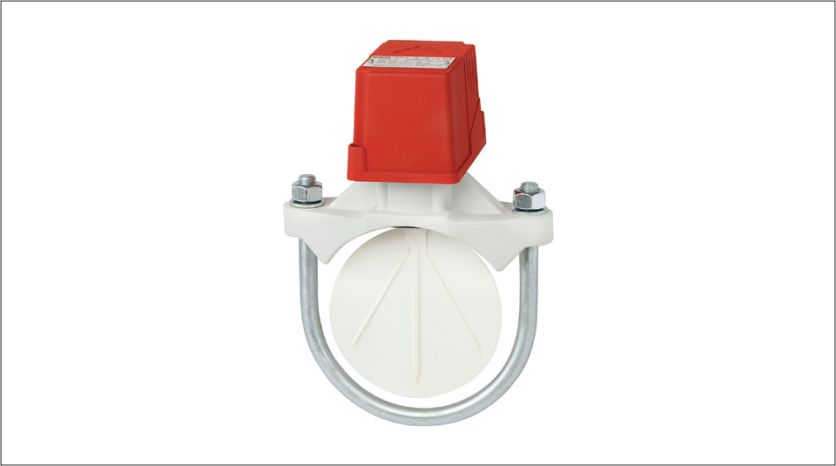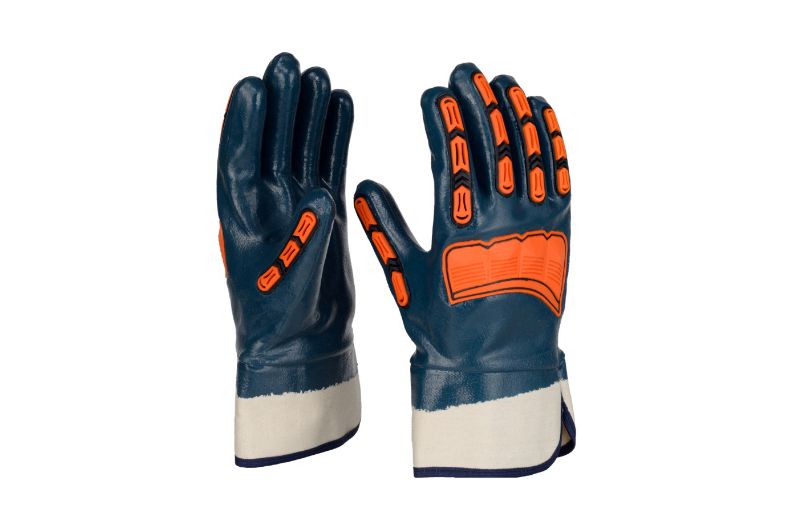Elevating sustainability,security for greener rise-ups
April 13, 2019 12:42 pm
An overview on how technological advancements in elevators ensure safety, low power consumption and security measurements.
In recent years, there has been a greater emphasis on using sustainable design practices. Sustainable design is a philosophy that includes earth-friendly techniques. In a world, increasingly, adapted to the comfort of people, technology has got a big role to play in making the system more reliable and sustainable.
Elevators are an integral part of our daily life; it’s difficult to imagine any building without an elevator. Elevators being sustainable is what the need of the hour is for the buildings.
Technology paving way for sustainable elevator
The invention of components like biodegradable oil for hydraulic lifts makes the elevator greener and efficient in nature. Vimal R Babu, Co-Founder & Director of Sales, Elite Elevators. “thyssenkrupp home lifts are engineered to an extent that these lifts do not require power while it descends. These aspects not only make the elevator more energy efficient but also make it more sustainable.”
As urbanisation increased, the need for housing and commercial space grew, India’s elevator industry continued to grow just as rapidly. Adding to that, a sustainability and technology demand can aid such a growth to additionally influence developments in the elevator and escalator industry. Sebi Joseph, President, Otis India states, “People are continuously looking at sustainable solutions, and the Gen2 offers just that through its energy saving and space conservation features. Otis’ flagship products, the Gen2 range, are geared towards efficiency whilst providing environmentally responsible features and benefits.”
With technological advancement, products are getting smaller, comfort is getting better and costs are getting lower. Vaibhav Pitale, Sr. Vice President, New Installation Business, Schindler India, states, “Technologies such as standby mode when not in use bring about significant savings in power consumption as well as space. We have always set benchmarks in terms of quality across the globe. We pay attention to minute details meanwhile adhering to environmentally friendly production methods. Our plant in Chakan is IGBC platinum rated and we have used solar panels to power more than 75 per cent of the plant operations.”
With the advent of new innovative technologies, elevator industry is witnessing the introduction of new generation of elevators incorporated with revolutionary changes to make them sustainable. Bharat Vishnani, Managing Director, thyssenkrupp Elevator (India) Pvt Ltd, “At thyssenkrupp Elevator, our products are at the heart of our sustainability commitment: to deliver customised mobility solutions for satisfied customers and in harmony with the needs of people and the environment.”
Safety and low power consumption
Elevators are generally very safe and secure, especially when maintained and installed by reputed manufacturers. However, additional safety systems like the automatic rescue system, infra-red door curtains and load weighing device can be installed separately. Joseph explains, “Gen2 range consist of the coated steel belt, the ReGen drive, the permanent magnet machine and the Otis’ PULSE system all of which, when combined, increase the life, efficiency, safety and reliability of the elevator. A Gen2 machine with a ReGen drive can reduce energy consumption by 75 per cent under normal operation compared to conventional geared machines with non-regenerative drives.”
An elevator is one of the busiest mobility solutions which is practically has more than 200-300 start-stops a day while the doors operate three to four times more than the elevator itself. When they are moving, the use of VVVF (Variable Voltage Variable Frequency) Drives allow less power consumption. In case of multi-facility building, elevators work in a group operation.
Pitale says, “Schindler has further advanced features with optimal programming of elevators called destination control system (DCS) which optimises people mobility within buildings and leads to reduction in energy consumption. Our third generation – the revolutionary PORT transit management system – now interconnects the entire building and provides architects with new possibilities in vertical mobility management and security planning.”
New innovations are leading the introduction of energy efficient elevators that not only consume less energy, but also produce clean energy. New elevators provide efficiency gains of about 30–40 per cent than buildings with older lifts. Vishnanisays, “New technologies and best practices involving motors, regeneration converters, control software, optimisation of counterweights and cabin lighting can yield significant savings.”
Taking into consideration the upward trend of buildings, now going up to 1,000 meters, elevators, escalators, and moving walkways play an important part in creating safe, sustainable and self-sufficient structures that dramatically reduce the overall energy used in buildings. The key factor in their contribution to sustainability is that it is not just environmental, but also economical, thereby appealing to all stakeholders in the urbanisation process.
The elevators are designed with the best technology, to maximise the internal spaces of buildings to not occupy extra space in them. In other words, the elevators have more free space in the cabin, with a specific objective, to achieve a higher provision of service in a minimum space. Babu says, “The safety of the users is certain owing to the different research in technological innovation done by thyssenkrupp. These elevators have a dual rescue of excellence for people in case of accidents or damage, complying with residential safety stands of Europe. Moreover, these lifts are environmentally sustainable, the characteristics of built-in materials make hydraulic elevators without machine room as the quietest that exist in the market. Another aspect of environmental advantage is its low energy consumption due to elevators; use energy only in the process of lifting your weight up and down is done by gravity.”
Security systems for an elevator
Elevator security systems can be valuable assets providing enhanced security, heightened safety, and lowered operational costs, as well as other essential benefits. Most buildings with two or more floors have elevators, but many of these facilities still allow unsecured access to the elevators and lobbies. Vishnani says, “This creates a security vulnerability that could expose the owner, tenants, and premises to a dangerous degree. Elevator security systems provide access control and security monitoring to prevent unauthorised visitors from entering protected areas of the facility.”
Elevator security systems can be integrated into a building automation system or operated as a stand-alone access control operation. The escalator security system should make extensive use of video monitoring and radio communication.
Every elevator has standard security systems pre-installed like an alarm bell, cameras, and emergency button. Additionally, various safety features can also be installed like the automatic rescue system, infra-red door curtains and load weighing device. Joseph says, “Safety factors also cover frequency of maintenance and annual inspection details. Otis is committed to safety as a top priority. We follow stringent standards for environment, health and safety and is guided by UTC standard workplace practices and Otis’ worldwide jobsite safety standards.”
Pitale says, “The escalators come with LED Step Gap Lighting and LED Comb Lighting that provides easy visibility at entry and exit points. Even though the gap between steps and skirting is already minimised, there are skirt brushes which provide extra safety by avoiding entrapment, which is especially important for children with small feet and for passengers wearing loose footwear.
The escalators are also provided with sensors which trigger a cut off mechanism for the motor if the water level rises above a certain specified limit preventing damage to the motors and equipment and consequential hazard to the users of the escalator. There is also an option of providing IP54 rated systems which improve the safety of the equipment from dust and water issues.
Elevator safety is an unavoidable requirement and is becoming one of the guarantees demanded by customers. Babu explains, “We have 5 layers of emergency evacuation system in all our elevators each can ensure that the life of your loved ones is actually safe using the lift. Power breakdowns, phase fluctuations and other electrical and electronic failures can happen at any moment, as a company we must be prepared for all adverse situations. ThyssenKrupp elevators have two additional German batteries for emergency purpose; second battery is an auxiliary battery to support the first one.”
Energy efficient technologies
Energy efficiency is attained by various means; the design of the elevator or escalator or by the technology that drives it. The energy efficiency of an elevator is determined by the energy efficiency rating. The elevator’s frequency of use, travel height and speed are important factors which have strong influence over the efficiency rating. Elevators are rated according to their energy performance. They range from ‘A’ to ‘G’ with ‘A’ being the best-in-class system.
Pitale says, “Schindler elevators can provide an energy efficiency classification in the ‘green’ range from ‘A’ to ‘B’ with products that are at the forefront in the usage of newer technologies. It reduces the total energy consumption by means of regenerative drives, highly efficient motors and drive systems, low-friction mechanics, etc.”
Key features of the energy efficient elevators are deployment of permanent magnet synchronous (PMS) gearless traction machines, which consume up to 50 per cent less energy than conventional geared machines and usage of regenerative drive technology. This feeds energy back into the building’s power grid during the motor’s generative mode when the car is lightly loaded and moving up or heavily loaded and moving down. Adding the regenerative feature can reduce energy consumption of the elevator by up to 50 per cent.
Vishnani says, “Lifts consume energy even when they are not raising or lowering loads. This energy consumption can represent more than 90 per cent of the total electricity consumption in lifts with a low number of daily trips and is attributable to equipment that is constantly working, such as control systems, lighting, ventilation, floor displays and operating consoles in each floor and inside the lift cabin.”
Many elevators come with energy efficient equipment, options of power stand mode or automatic switch-off, environmentally responsible systems and elevators that offer ease of maintenance.
Joseph explains, “Gen2 elevators with ReGen drives are as much as 75 per cent more energy efficient than traditional elevators with conventional drives. The ReGen regenerative drive which captures energy that is normally wasted during braking and feeds it back into the building’s electric grid, compact gearless machine and pulse monitoring system.The product offers an upgrade from traditional rope-geared systems to the permanent magnet (PM) gearless-belted technology.”
Elevators can facilitate in making any building power efficient. Building up an energy efficient elevator requires attention to the minute detail. Babu says, “Incorporation of in-cab sensorsand accompanying software allows elevators to enter an idle mode when not in use. This means that the lights turn off, the ventilation system slows down and the video screens turn off when the elevator is empty.”
The innovative drive system must be applicable in order to reduce the use of high voltage mechanisms. This eventually reduces the dependency on the high power machines which run on heavy consumption of electricity and excludes the occupancy of the space for the machines and also cuts on the energy bills.
Innovative drive system reduces the dependency on the high power machines.
Vimal R Babu, Co-Founder & Director of Sales, Elite Elevators
Lifts consume energy i.e. more than 90 per cent of the total electricity consumption, even when they are not raising or lowering loads.
Bharat Vishnani, Managing Director, thyssenkrupp Elevator (India) Pvt Ltd
The use of VVVF drives allow less power consumption when a elevator is moving.
Vaibhav Pitale – Sr. Vice President, New Installation Business, Schindler India
Elevators are generally very safe and secure, especially when maintained and installed by reputed manufacturers.
Sebi Joseph, President, Otis India
Cookie Consent
We use cookies to personalize your experience. By continuing to visit this website you agree to our Terms & Conditions, Privacy Policy and Cookie Policy.
















 English
English Hindi
Hindi